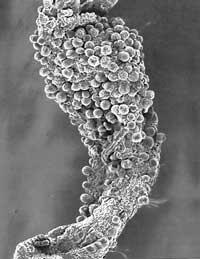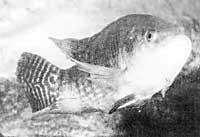Parasites and evolution
1997/06/01 Elhuyar Zientzia Iturria: Elhuyar aldizkaria
A series of themes addressed hundreds of millions of years ago make members of the Apicomplexa family disappear. They belong to this family, among others, the agents of malaria and toxoplasmosis, as well as the mysterious organelles called apicoplastos. These organelles are very similar to the chloroplasts of the plants. They have chloroplasts expression genes, but do not have photosynthetic activity.

How can the parasite have at home a stranger from the world of plants? Apicoplastes with circular DNA surrounded by four membranes would be obtained through some process of “secondary endobiosis” of the green algae. In other words, “engullieron” green algae of the parasites and, through a known evolutionary mechanism, also had the ingestion of a photosynthetic bacterium with photosynthetic machinery.
The researchers had already formulated hypotheses about the location of this DNA and the origin of the surprise. Analyzing a sequence of a gene of its own, phylogenetic analysis reveals that it is of vegetable origin. The mystery of the role of this organism remains unsolved, but it is possible that this phenomenon is applied in therapeutic. In fact, apicoplastes can be for antibiotics and the treatment of their harmful parasites.

Gai honi buruzko eduki gehiago
Elhuyarrek garatutako teknologia




